Apple A16 Bionic vs AMD Ryzen 7 7700X
Last updated:
CPU comparison with benchmarks

|
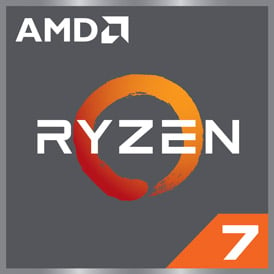
|
|
| Apple A16 Bionic | AMD Ryzen 7 7700X | |
CPU comparisonIn this CPU comparison, we compare the Apple A16 Bionic and the AMD Ryzen 7 7700X and use benchmarks to check which processor is faster.
We compare the Apple A16 Bionic 6 core processor released in Q3/2022 with the AMD Ryzen 7 7700X which has 8 CPU cores and was introduced in Q4/2022. |
||
| Apple A series (22) | Family | AMD Ryzen 7 (68) |
| Apple A16 (1) | CPU group | AMD Ryzen 7000 (14) |
| 16 | Generation | 6 |
| A16 | Architecture | Raphael (Zen 4) |
| Mobile | Segment | Desktop / Server |
| Apple A15 Bionic (5-GPU) | Predecessor | AMD Ryzen 7 5700X |
| Apple A17 Pro | Successor | -- |
|
|
||
CPU Cores and Base FrequencyThe Apple A16 Bionic is a 6 core processor with a clock frequency of 3.46 GHz. The processor can compute 6 threads at the same time. The AMD Ryzen 7 7700X clocks with 4.50 GHz (5.40 GHz), has 8 CPU cores and can calculate 16 threads in parallel. |
||
| Apple A16 Bionic | Characteristic | AMD Ryzen 7 7700X |
| 6 | Cores | 8 |
| 6 | Threads | 16 |
| hybrid (big.LITTLE) | Core architecture | normal |
| No | Hyperthreading | Yes |
| No | Overclocking ? | Yes |
| 3.46 GHz 2x Everest |
A-Core | 4.50 GHz (5.40 GHz) |
| 2.02 GHz 4x Sawtooth |
B-Core | -- |
Artificial Intelligence and Machine LearningProcessors with the support of artificial intelligence (AI) and machine learning (ML) can process many calculations, especially audio, image and video processing, much faster than classic processors. Algorithms for ML improve their performance the more data they have collected via software. ML tasks can be processed up to 10,000 times faster than with a classic processor. |
||
| Apple A16 Bionic | Characteristic | AMD Ryzen 7 7700X |
| Apple Neural Engine | AI hardware | -- |
| 16 Neural cores @ 17 TOPS | AI specifications | -- |
Internal GraphicsGraphics (iGPU) integrated into the processor not only enable image output without having to rely on a dedicated graphics solution, but can also efficiently accelerate video playback. |
||
| Apple A16 (5 GPU Cores) | GPU | AMD Radeon Graphics (Raphael) |
| 1.34 GHz | GPU frequency | 0.40 GHz |
| -- | GPU (Turbo) | 2.20 GHz |
| 13 | GPU Generation | 9 |
| 4 nm | Technology | 5 nm |
| 3 | Max. displays | 3 |
| 20 | Compute units | 2 |
| 640 | Shader | 128 |
| No | Hardware Raytracing | No |
| No | Frame Generation | No |
| 6 GB | Max. GPU Memory | 8 GB |
| -- | DirectX Version | 12 |
Hardware codec supportA photo or video codec that is accelerated in hardware can greatly accelerate the working speed of a processor and extend the battery life of notebooks or smartphones when playing videos. |
||
| Apple A16 (5 GPU Cores) | GPU | AMD Radeon Graphics (Raphael) |
| Decode / Encode | Codec h265 / HEVC (8 bit) | Decode / Encode |
| Decode / Encode | Codec h265 / HEVC (10 bit) | Decode / Encode |
| Decode / Encode | Codec h264 | Decode / Encode |
| Decode / Encode | Codec VP9 | Decode / Encode |
| Decode / Encode | Codec VP8 | Decode / Encode |
| No | Codec AV1 | Decode |
| Decode | Codec AVC | Decode / Encode |
| Decode | Codec VC-1 | Decode |
| Decode / Encode | Codec JPEG | Decode / Encode |
Memory & PCIeUp to 6 GB of memory in a maximum of 1 memory channels is supported by the Apple A16 Bionic, while the AMD Ryzen 7 7700X supports a maximum of 128 GB of memory with a maximum memory bandwidth of 83.2 GB/s enabled. |
||
| Apple A16 Bionic | Characteristic | AMD Ryzen 7 7700X |
| LPDDR5-6400 | Memory | DDR5-5200 |
| 6 GB | Max. Memory | 128 GB |
| 1 (Single Channel) | Memory channels | 2 (Dual Channel) |
| 51.2 GB/s | Max. Bandwidth | 83.2 GB/s |
| No | ECC | Yes |
| 20.00 MB | L2 Cache | 8.00 MB |
| 24.00 MB | L3 Cache | 32.00 MB |
| -- | PCIe version | 5.0 |
| -- | PCIe lanes | 24 |
| -- | PCIe Bandwidth | 94.5 GB/s |
Thermal ManagementThe Apple A16 Bionic has a TDP of 7.25 W. The TDP of the AMD Ryzen 7 7700X is 105 W. System integrators use the TDP of the processor as a guide when dimensioning the cooling solution. |
||
| Apple A16 Bionic | Characteristic | AMD Ryzen 7 7700X |
| 7.25 W | TDP (PL1 / PBP) | 105 W |
| -- | TDP (PL2) | 142 W |
| -- | TDP up | -- |
| -- | TDP down | -- |
| -- | Tjunction max. | 95 °C |
Technical detailsThe Apple A16 Bionic has 44.00 MB cache and is manufactured in 4 nm. The cache of AMD Ryzen 7 7700X is at 40.00 MB. The processor is manufactured in 5 nm. |
||
| Apple A16 Bionic | Characteristic | AMD Ryzen 7 7700X |
| 4 nm | Technology | 5 nm |
| Chiplet | Chip design | Chiplet |
| Armv8.6-A (64 bit) | Instruction set (ISA) | x86-64 (64 bit) |
| -- | ISA extensions | SSE4a, SSE4.1, SSE4.2,FMA3, AVX2, AVX512 |
| -- | Socket | AM5 (LGA 1718) |
| None | Virtualization | AMD-V, SVM |
| No | AES-NI | Yes |
| iOS | Operating systems | Windows 10, Windows 11, Linux |
| Q3/2022 | Release date | Q4/2022 |
| -- | Release price | 399 $ |
| show more data | show more data | |
Rate these processors
Average performance in benchmarks
⌀ Single core performance in 2 CPU benchmarks
⌀ Multi core performance in 2 CPU benchmarks
Geekbench 5, 64bit (Single-Core)
Geekbench 5 is a cross plattform benchmark that heavily uses the systems memory. A fast memory will push the result a lot. The single-core test only uses one CPU core, the amount of cores or hyperthreading ability doesn't count.
|
|
Apple A16 Bionic
6C 6T @ 3.46 GHz |
||
|
|
AMD Ryzen 7 7700X
8C 16T @ 5.40 GHz |
||
Geekbench 5, 64bit (Multi-Core)
Geekbench 5 is a cross plattform benchmark that heavily uses the systems memory. A fast memory will push the result a lot. The multi-core test involves all CPU cores and taks a big advantage of hyperthreading.
|
|
Apple A16 Bionic
6C 6T @ 3.46 GHz |
||
|
|
AMD Ryzen 7 7700X
8C 16T @ 5.20 GHz |
||
Geekbench 6 (Single-Core)
Geekbench 6 is a benchmark for modern computers, notebooks and smartphones. What is new is an optimized utilization of newer CPU architectures, e.g. based on the big.LITTLE concept and combining CPU cores of different sizes. The single-core benchmark only evaluates the performance of the fastest CPU core, the number of CPU cores in a processor is irrelevant here.
|
|
Apple A16 Bionic
6C 6T @ 3.46 GHz |
||
|
|
AMD Ryzen 7 7700X
8C 16T @ 5.40 GHz |
||
Geekbench 6 (Multi-Core)
Geekbench 6 is a benchmark for modern computers, notebooks and smartphones. What is new is an optimized utilization of newer CPU architectures, e.g. based on the big.LITTLE concept and combining CPU cores of different sizes. The multi-core benchmark evaluates the performance of all of the processor's CPU cores. Virtual thread improvements such as AMD SMT or Intel's Hyper-Threading have a positive impact on the benchmark result.
|
|
Apple A16 Bionic
6C 6T @ 3.46 GHz |
||
|
|
AMD Ryzen 7 7700X
8C 16T @ 5.20 GHz |
||
iGPU - FP32 Performance (Single-precision GFLOPS)
The theoretical computing performance of the internal graphics unit of the processor with simple accuracy (32 bit) in GFLOPS. GFLOPS indicates how many billion floating point operations the iGPU can perform per second.
|
|
Apple A16 Bionic
Apple A16 (5 GPU Cores) @ 1.34 GHz |
||
|
|
AMD Ryzen 7 7700X
AMD Radeon Graphics (Raphael) @ 2.20 GHz |
||
Cinebench 2024 (Single-Core)
The Cinebench 2024 benchmark is based on the Redshift rendering engine, which is also used in Maxon's 3D program Cinema 4D. The benchmark runs are each 10 minutes long to test whether the processor is limited by its heat generation.
|
|
Apple A16 Bionic
6C 6T @ 3.46 GHz |
||
|
|
AMD Ryzen 7 7700X
8C 16T @ 5.40 GHz |
||
Cinebench 2024 (Multi-Core)
The Multi-Core test of the Cinebench 2024 benchmark uses all cpu cores to render using the Redshift rendering engine, which is also used in Maxons Cinema 4D. The benchmark run is 10 minutes long to test whether the processor is limited by its heat generation.
|
|
Apple A16 Bionic
6C 6T @ 3.46 GHz |
||
|
|
AMD Ryzen 7 7700X
8C 16T @ 5.40 GHz |
||
Cinebench R23 (Single-Core)
Cinebench R23 is the successor of Cinebench R20 and is also based on the Cinema 4 Suite. Cinema 4 is a worldwide used software to create 3D forms. The single-core test only uses one CPU core, the amount of cores or hyperthreading ability doesn't count.
|
|
Apple A16 Bionic
6C 6T @ 3.46 GHz |
||
|
|
AMD Ryzen 7 7700X
8C 16T @ 5.40 GHz |
||
Cinebench R23 (Multi-Core)
Cinebench R23 is the successor of Cinebench R20 and is also based on the Cinema 4 Suite. Cinema 4 is a worldwide used software to create 3D forms. The multi-core test involves all CPU cores and taks a big advantage of hyperthreading.
|
|
Apple A16 Bionic
6C 6T @ 3.46 GHz |
||
|
|
AMD Ryzen 7 7700X
8C 16T @ 5.20 GHz |
||
Cinebench R20 (Single-Core)
Cinebench R20 is the successor of Cinebench R15 and is also based on the Cinema 4 Suite. Cinema 4 is a worldwide used software to create 3D forms. The single-core test only uses one CPU core, the amount of cores or hyperthreading ability doesn't count.
|
|
Apple A16 Bionic
6C 6T @ 3.46 GHz |
||
|
|
AMD Ryzen 7 7700X
8C 16T @ 5.40 GHz |
||
Cinebench R20 (Multi-Core)
Cinebench R20 is the successor of Cinebench R15 and is also based on the Cinema 4 Suite. Cinema 4 is a worldwide used software to create 3D forms. The multi-core test involves all CPU cores and taks a big advantage of hyperthreading.
|
|
Apple A16 Bionic
6C 6T @ 3.46 GHz |
||
|
|
AMD Ryzen 7 7700X
8C 16T @ 5.20 GHz |
||
AnTuTu 10 Benchmark
The AnTuTu 10 benchmark is one of the best-known benchmarks for mobile processors, which is now available in version 10. There is a version for Android-based smartphones and tablets, as well as a version for Apple mobile devices, i.e. iPhones and iPads.
The Antutu 10 benchmark has 3 phases. In the first phase, the device's RAM is tested, in phase 2 the graphics are tested and in the final phase the entire device is pushed to its performance limits by rendering 3D graphics.
Antutu 10 is therefore ideal for comparing the performance of different devices.
The Antutu 10 benchmark has 3 phases. In the first phase, the device's RAM is tested, in phase 2 the graphics are tested and in the final phase the entire device is pushed to its performance limits by rendering 3D graphics.
Antutu 10 is therefore ideal for comparing the performance of different devices.
|
|
Apple A16 Bionic
6C 6T @ 3.46 GHz |
||
|
|
AMD Ryzen 7 7700X
8C 16T @ 4.50 GHz |
||
AnTuTu 9 Benchmark
The AnTuTu 9 benchmark is very well suited to measuring the performance of a smartphone. AnTuTu 9 is quite heavy on 3D graphics and can now also use the "Metal" graphics interface. In AnTuTu, memory and UX (user experience) are also tested by simulating browser and app usage. AnTuTu version 9 can compare any ARM CPU running on Android or iOS. Devices may not be directly comparable when benchmarked on different operating systems.
In the AnTuTu 9 benchmark, the single-core performance of a processor is only slightly weighted. The rating is made up of the multi-core performance of the processor, the speed of the working memory, and the performance of the internal graphics.
In the AnTuTu 9 benchmark, the single-core performance of a processor is only slightly weighted. The rating is made up of the multi-core performance of the processor, the speed of the working memory, and the performance of the internal graphics.
|
|
Apple A16 Bionic
6C 6T @ 3.46 GHz |
||
|
|
AMD Ryzen 7 7700X
8C 16T @ 4.50 GHz |
||
Blender 3.1 Benchmark
In the Blender Benchmark 3.1, the scenes "monster", "junkshop" and "classroom" are rendered and the time required by the system is measured. In our benchmark we test the CPU and not the graphics card. Blender 3.1 was presented as a standalone version in March 2022.
|
|
Apple A16 Bionic
6C 6T @ 3.46 GHz |
||
|
|
AMD Ryzen 7 7700X
8C 16T @ 5.20 GHz |
||
Estimated results for PassMark CPU Mark
Some of the CPUs listed below have been benchmarked by CPU-monkey. However the majority of CPUs have not been tested and the results have been estimated by a CPU-monkey’s secret proprietary formula. As such they do not accurately reflect the actual Passmark CPU mark values and are not endorsed by PassMark Software Pty Ltd.
|
|
Apple A16 Bionic
6C 6T @ 3.46 GHz |
||
|
|
AMD Ryzen 7 7700X
8C 16T @ 5.20 GHz |
||
CPU-Z Benchmark 17 (Single-Core)
The CPU-Z benchmark measures a processor's performance by measuring the time it takes the system to complete all benchmark calculations. The faster the benchmark is completed, the higher the score.
|
|
Apple A16 Bionic
6C 6T @ 3.46 GHz |
||
|
|
AMD Ryzen 7 7700X
8C 16T @ 5.20 GHz |
||
CPU-Z Benchmark 17 (Multi-Core)
The CPU-Z benchmark measures a processor's performance by measuring the time it takes the system to complete all benchmark calculations. The faster the benchmark is completed, the higher the score.
|
|
Apple A16 Bionic
6C 6T @ 3.46 GHz |
||
|
|
AMD Ryzen 7 7700X
8C 16T @ 4.50 GHz |
||
Cinebench R15 (Single-Core)
Cinebench R15 is the successor of Cinebench 11.5 and is also based on the Cinema 4 Suite. Cinema 4 is a worldwide used software to create 3D forms. The single-core test only uses one CPU core, the amount of cores or hyperthreading ability doesn't count.
|
|
Apple A16 Bionic
6C 6T @ 3.46 GHz |
||
|
|
AMD Ryzen 7 7700X
8C 16T @ 5.40 GHz |
||
Cinebench R15 (Multi-Core)
Cinebench R15 is the successor of Cinebench 11.5 and is also based on the Cinema 4 Suite. Cinema 4 is a worldwide used software to create 3D forms. The multi-core test involves all CPU cores and taks a big advantage of hyperthreading.
|
|
Apple A16 Bionic
6C 6T @ 3.46 GHz |
||
|
|
AMD Ryzen 7 7700X
8C 16T @ 5.20 GHz |
||
CPU performance per watt (efficiency)
Efficiency of the processor under full load in the Cinebench R23 (multi-core) benchmark. The benchmark result is divided by the average energy required (CPU package power in watts). The higher the value, the more efficient the CPU is under full load.
|
|
Apple A16 Bionic
3.46 GHz |
||
|
|
AMD Ryzen 7 7700X
20,399 CB R23 MC @ 104 W |
||
Performance for Artificial Intelligence (AI) and Machine Learning (ML)
Processors with the support of artificial intelligence (AI) and machine learning (ML) can process many calculations, especially audio, image and video processing, much faster than classic processors. The performance is given in the number (trillions) of arithmetic operations per second (TOPS).
|
|
Apple A16 Bionic
6C 6T @ 3.46 GHz |
||
|
|
AMD Ryzen 7 7700X
8C 16T @ 4.50 GHz |
||
Devices using this processor |
|
| Apple A16 Bionic | AMD Ryzen 7 7700X |
| Apple iPhone 14 Pro Apple iPhone 14 Pro Max |
Unknown |
News and articles for the Apple A16 Bionic and the AMD Ryzen 7 7700X
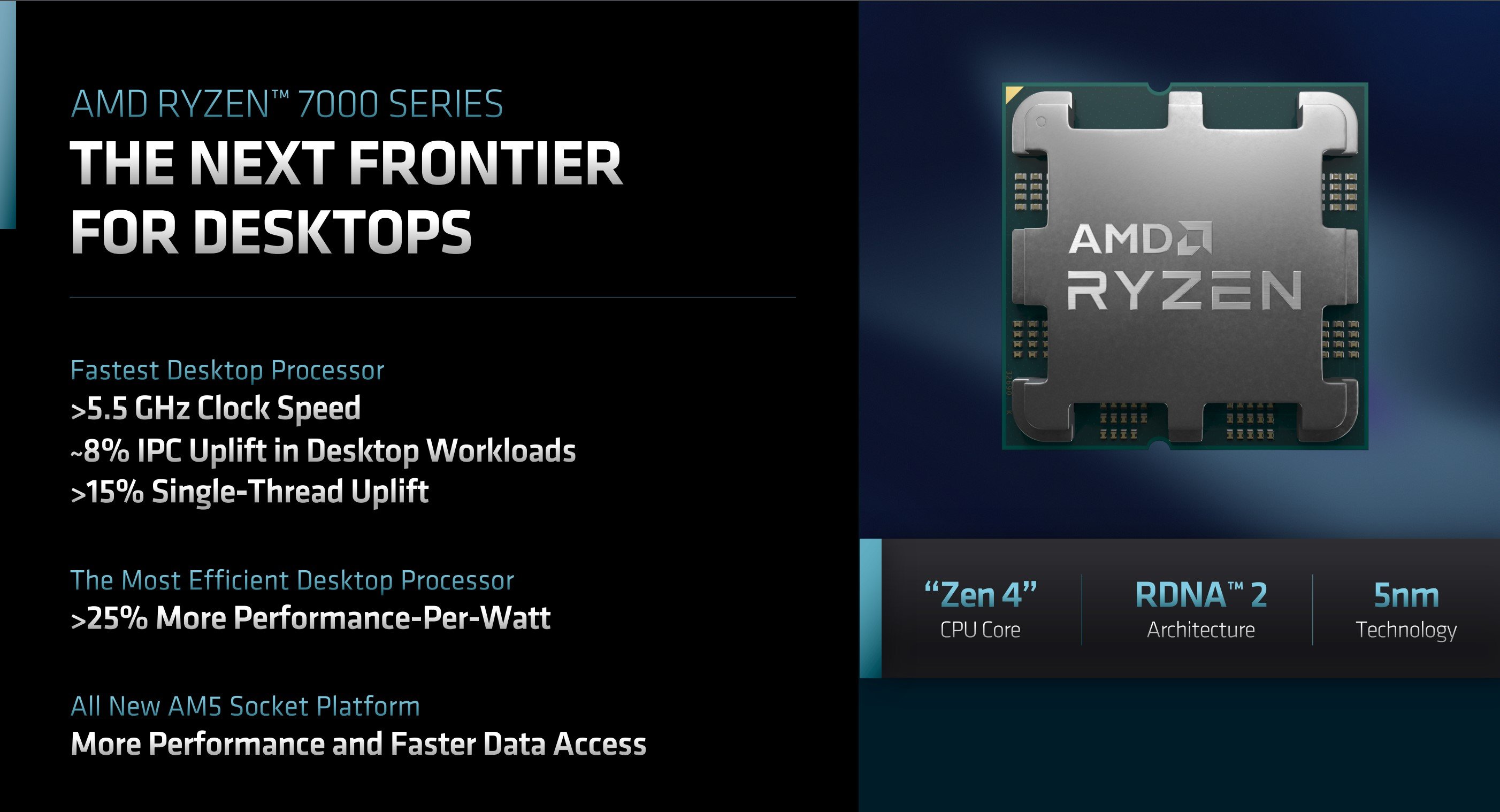
Why the new AMD Ryzen 7000 processors for the AM5 socket are currently not a good deal
Posted by Stefan on 2022-10-11
At the end of September 2022, the time had come: AMD presented its latest desktop processors called AMD Ryzen 7000. Initially, 4 processors with 6 to 16 CPU cores were released.
The new socket AM5 (LGA 1718) is used for the first time, which is intended to replace the very durable socket AM4 introduced in 2017 as AMDs mainstream platform. This includes (depending on the chipset) PCIe 5.0 support as well as the exclusive use of DDR5 memory on all AM5 mainboards.
Officially, DDR5-5200 is the maximum, but with AMDs EXPO Technology which is similar to Intel's XMP 3.0, AMD now also has a solution for easy overclocking of the main memory. AMD itself names DDR5-6000 as the sweet spot for the new AMD Ryzen 7000 processors.
The new socket AM5 (LGA 1718) is used for the first time, which is intended to replace the very durable socket AM4 introduced in 2017 as AMDs mainstream platform. This includes (depending on the chipset) PCIe 5.0 support as well as the exclusive use of DDR5 memory on all AM5 mainboards.
Officially, DDR5-5200 is the maximum, but with AMDs EXPO Technology which is similar to Intel's XMP 3.0, AMD now also has a solution for easy overclocking of the main memory. AMD itself names DDR5-6000 as the sweet spot for the new AMD Ryzen 7000 processors.
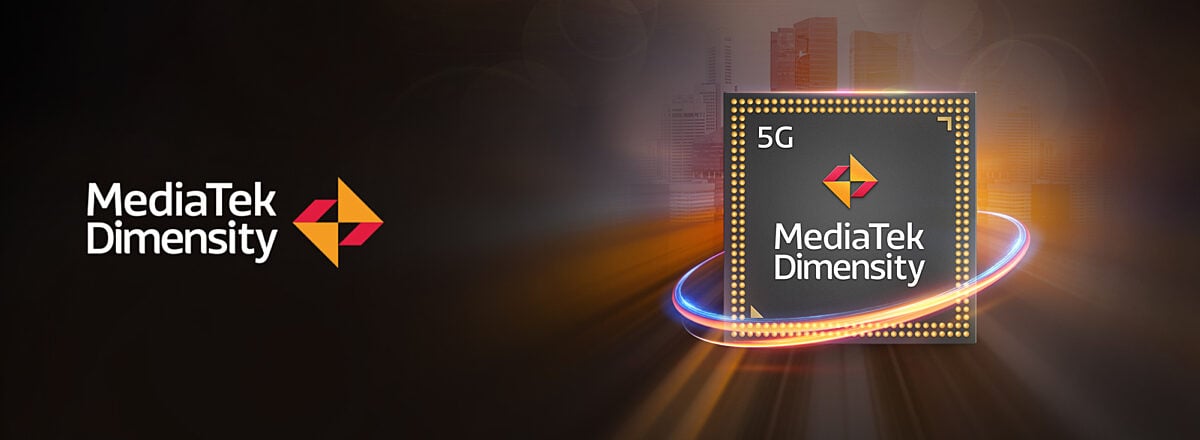
MediaTek Dimensity 9000+ vs Apple A16 and Snapdragon 8+ Gen 1
Posted by Stefan on 2022-09-22
With the Dimensity 9000+, Mediatek presents the latest of its smartphone chips. The successor to the Mediatek Dimensity 9000 achieves higher CPU and GPU clock frequencies thanks to better binning. The CPU clock of the prime core (A core) increases from 3.0 to 3.2 GHz. And the ARM Mali-G710 MP10 GPU can now clock at 0.9 GHz (previously 0.85 GHz).
Both are a good improvement over the Dimensity 9000 in theory but the increase in performance should not usually be noticeable in practice. In the end, the overall performance of the Mediatek Dimensity 9000+ is impressive: Qualcomm Snapdragon 8+ Gen 1 is beaten in Geekbench 5 in both the single-core and multi-core benchmarks.
Both are a good improvement over the Dimensity 9000 in theory but the increase in performance should not usually be noticeable in practice. In the end, the overall performance of the Mediatek Dimensity 9000+ is impressive: Qualcomm Snapdragon 8+ Gen 1 is beaten in Geekbench 5 in both the single-core and multi-core benchmarks.
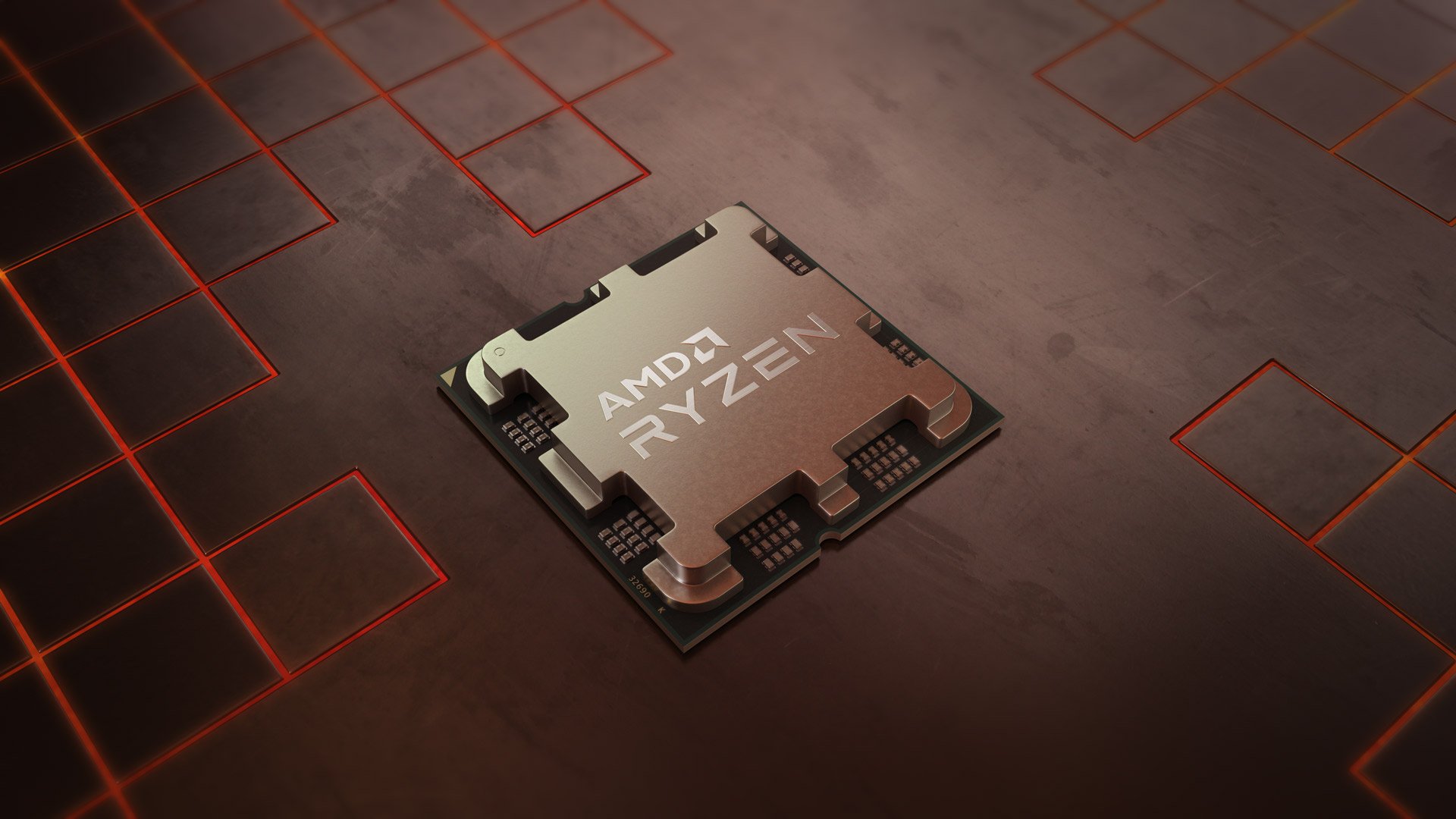
The evolution of AMD Ryzen processors
Posted by Stefan on 2022-09-06
The AMD Ryzen processors are designed for the mid to high-end range and are grouped into the Ryzen 3, Ryzen 5, Ryzen 7 and Ryzen 9 classes. AMD follows the market leader Intel, which groups its Core i series (Intel Core i3, Core i5, Core i7 and Core i9) identically.
The AMD Ryzen processors were first introduced by AMD in Q1 2017. They are the successor to the not particularly successful AMD Bulldozer processors. The latter were manufactured using an outdated manufacturing process and could not keep up with the competing products from Intel. AMD lost a large portion of its desktop processor market share during this period.
The AMD Ryzen processors were first introduced by AMD in Q1 2017. They are the successor to the not particularly successful AMD Bulldozer processors. The latter were manufactured using an outdated manufacturing process and could not keep up with the competing products from Intel. AMD lost a large portion of its desktop processor market share during this period.
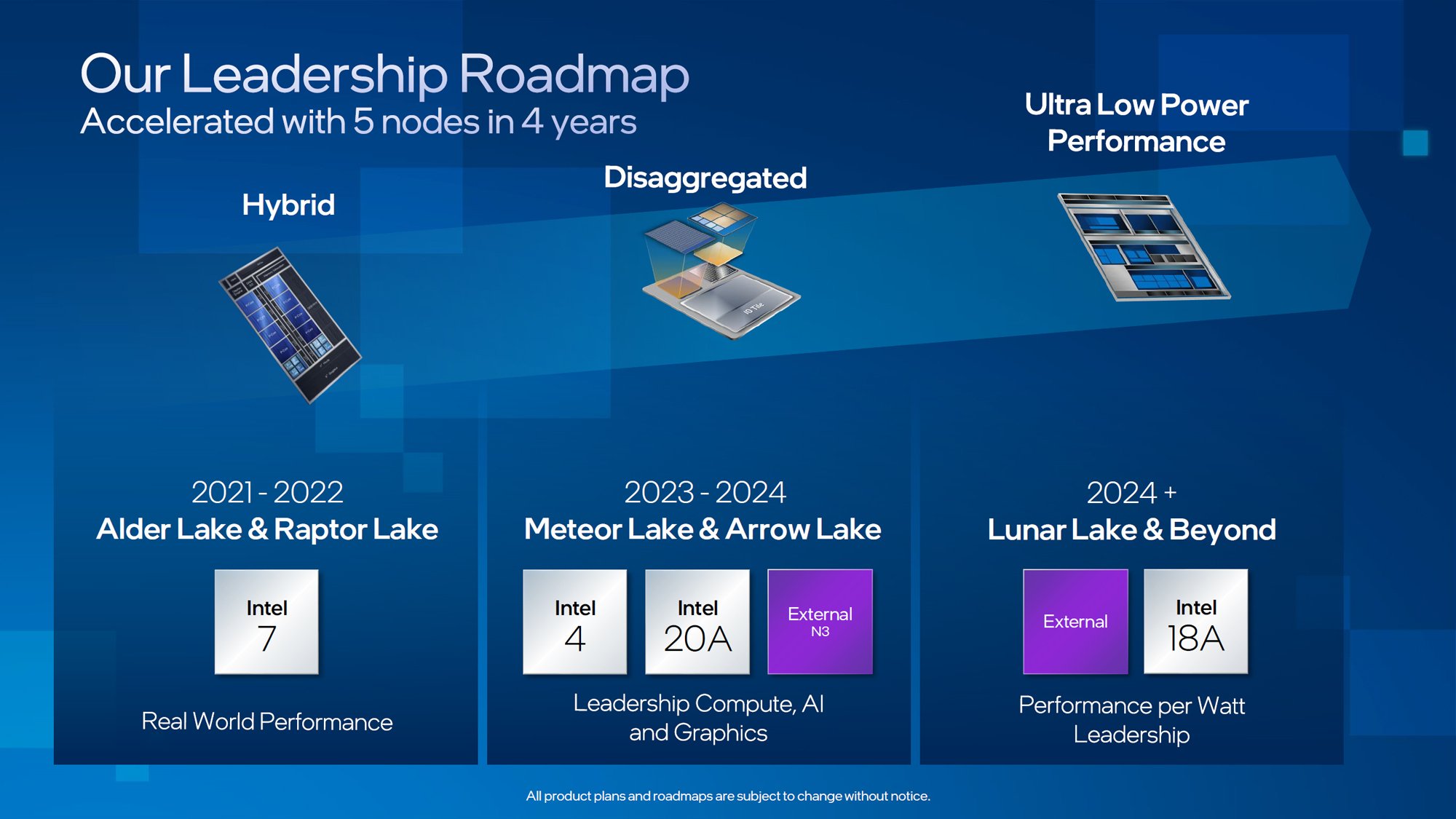
AMD Ryzen 7000 and Intel Core i 13 Gen at almost 6 GHz clock speed
Posted by Stefan on 2022-08-29
In September, both AMD and Intel are introducing their new mainstream desktop processors. It doesn't seem to have been as close as this year for a long time, leaked benchmarks of the new top models from AMD and Intel point to a head-to-head race.
This year even the 6 GHz clock limit is almost within reach. With a good cooler and some overclocking it should be possible to reach the 6 GHz limit. But even in series production, the manufacturers try to realize the highest possible clock frequency, at least on one core.
This year even the 6 GHz clock limit is almost within reach. With a good cooler and some overclocking it should be possible to reach the 6 GHz limit. But even in series production, the manufacturers try to realize the highest possible clock frequency, at least on one core.

What we know about the new Apple A16 Bionic in Apples iPhone 14
Posted by Stefan on 2022-08-23
Every year Apple releases a new iPhone series and with the release of the series always the latest Apple A processor. This has become even more important in recent years, as it has also formed the basis for Apple's M processor series since 2020. The Apple M processors are based on the same core architecture as the Apple A processors, but have been significantly upgraded in many areas such as memory bandwith, amount of memory or cache.
Popular comparisons containing this CPUs
back to index

